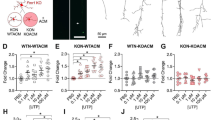Status epilepticus (SE)-related neuronal degeneration and glial activation in different regions of the developing rat hippocampus were investigated in an age- and time-dependent manner. Wistar rat pups of postnatal day (P) 7, 15, and 21 were injected i.p. with lithium+pilocarpine to induce SE or saline to make controls. Rats were sacrificed at 2, 12, 24 h, 3 days and 7 days after SE induction. Neurodegeneration in the hippocampus was assessed by Fluoro-Jade B staining. The expressions of the astrocyte marker (GFAP) and microglia marker (Iba-1) were evaluated by immunohistochemistry. In P7 rats, there was no neuronal damage at any time points in SE. Two hours after SE induction, the number of degenerating neurons in the hippocampus significantly increased in the CA1 region of P15 rats and in both CA1 and CA3 regions of P21 rats. Degenerating neurons in the dentate gyrus appeared at 24 h after SE in P15 and P21 rats. In P7 rats, there was no up-regulation of GFAP- or Iba-1-positive cells in SE. The expression of GFAP was dramatically elevated at 12 h in the CA1 and CA3 regions of P15 rats. The number of GFAP-positive cells did not increase in the dentate gyrus until 24 h after SE induction in P15 rats. In P21 SE rats, the mentioned index increased in the CA1, CA3, and dentate gyrus at 2 h. The number of Iba-1-positive cells increased significantly in the CA1, CA3, and dentate gyrus at 12 h in P15 rats and as early as at 2 h in P21 rats. These findings suggest that SE-related neuronal damage and glial activation in the immature brain are, in general, less intense than in the adult one, and the development of these processes in different structures of the hippocampus demonstrates significant temporal and spatial specificity.
Similar content being viewed by others
References
K. Biber, H. Neumann, K. Inoue, and H. W. Boddeke, “Neuronal ‘on’ and ‘off’ signals control microglia,” Trends Neurosci., 30, No. 11, 596-602 (2007).
R. J. Racine, “Modification of seizure activity by electrical stimulation. II. Motor seizure,” Electroencephalogr. Clin. Neurophysiol., 32, No. 3, 281-294 (1972).
F. E. Jensen, H. Blume, S. Alvarado, et al., “NBQX blocks acute and late epileptogenic effects of perinatal hypoxia,” Epilepsia, 36, No. 10, 966-972 (1995).
S. S. Schreiber, G. Tocco, I. Najm, et al., “Absence of c-fos induction in neonatal rat brain after seizures,” Neurosci. Lett., 136, No. 1, 31-35 (1992).
R. Sankar, D. H. Shin, and C. G. Wasterlain, “GABA metabolism during status epilepticus in the developing rat brain,” Dev. Brain Res., 98, No. 1, 60-64 (1997).
M. Patel and Q. Y. Li, “Age dependence of seizureinduced oxidative stress,” Neuroscience, 118, No. 2, 431-437 (2003).
X. Wang, A. Zaidi, R. Pal, et al., “Genomic and biochemical approaches in the discovery of mechanisms for selective neuronal vulnerability to oxidative stress,” BMC Neurosci., 19, doi: 10.1186/1471-2202-10-12 (2009).
M. M. Haglund and P. A. Schwartzkroin, “Role of Na-K pump potassium regulation and IPSPs in seizures and spreading depression in immature rabbit hippocampal slices,” J. Neurophysiol., 63, No. 2, 225-239 (1990).
H. B. Michelson and E. W. Lothman, “An in vivo electrophysiological study of the ontogeny of excitatory and inhibitory processes in the rat hippocampus,” Dev. Brain Res., 47, No. 1, 113-122 (1989).
J. W. Swann, R. J. Brady, and D. L. Martin, “Postnatal development of GABA-mediated synaptic inhibition in rat hippocampus,” Neuroscience, 28, No. 3, 551-561 (1989).
J. Priller, C. A. Haas, M. Reddington, and G. W. Kreutzberg, “Calcitonin gene-related peptide and ATP induce immediate early gene expression in cultured rat microglial cells,” Glia, 15, No. 4, 447-457 (1995).
Y. Taniwaki, M. Kato, T. Araki, and T. Kobayashi, “Microglial activation by epileptic activities through the propagation pathway of kainic acid-induced hippocampal seizures in the rat,” Neurosci. Lett., 217, No. 1, 29-32 (1996).
W. J. Streit, S. A. Walter, and N. A. Pennell, “Reactive microgliosis,” Prog. Neurobiol., 57, No. 6, 563-581 (1999).
M. Oprica, C. Eriksson, and M. Schultzberg, “Inflammatory mechanisms associated with brain damage induced by kainic acid with special reference to the interleukin-1 system,” J. Cell. Mol. Med., 7, No. 2, 127-140 (2003).
Author information
Authors and Affiliations
Corresponding author
Rights and permissions
About this article
Cite this article
Li, B., Yang, L., Zhou, H. et al. Status Epilepticus-Related Hippocampal Injury in the Immature Rat Brain. Neurophysiology 47, 30–35 (2015). https://doi.org/10.1007/s11062-015-9493-2
Received:
Published:
Issue Date:
DOI: https://doi.org/10.1007/s11062-015-9493-2




